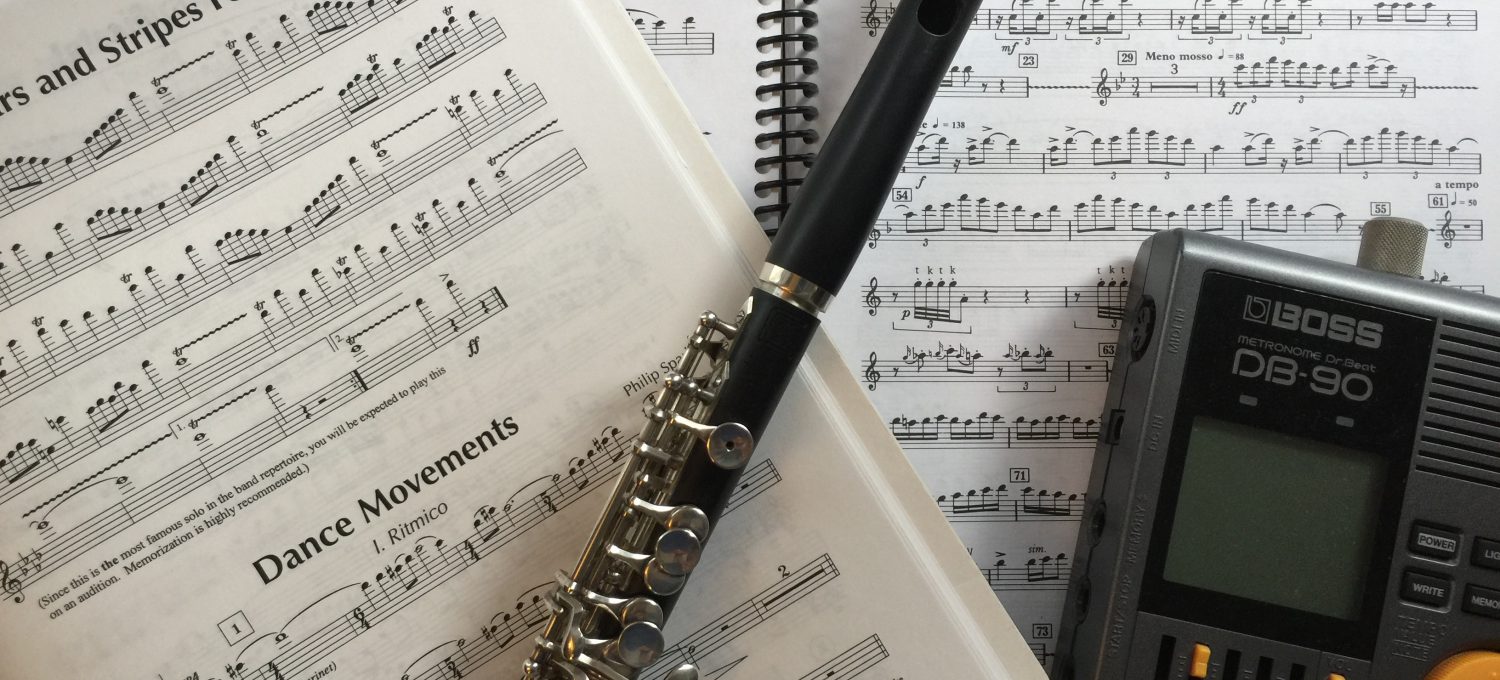Modern technology and the demands of players have motivated piccolo builders to reconsider the physical limitations of the piccolo mechanism. Many of the top makers now offer key work options that previously have been available only on the flute. These newer options allow piccolo players to navigate challenging passages with greater ease. The additional keys also offer alternative trill and fingering options that have been considered to be next to impossible.
The split E mechanism has long been an available option on the flute and is now a standard option on many brands of intermediate level piccolos. A split E allows the G1 and G2 keys (the keys on either side of the G# touch piece) to move independently. When playing high E, the lower G key (G2) also closes allowing for proper ventilation of the high E. Historically, the high E was vented properly on instruments with an open G# key but when instruments were built with a closed G# key (the G# key that most of us play) the venting was displaced and high E became more challenging to produce without jumping to the next harmonic (the high A).
The C# trill key is a recognizable option on most modern flutes and has been for quite some time. It has only been in the last 15 years or so (aside from a few historical exceptions) that the option has become available on the piccolo. The biggest challenge has actually been due to the size of the smallest instrument. The C# trill key requires an additional tonehole near the thumb key. This additional tonehole requires an extra pad and key cup as well as the mechanism needed to activate the key. The size of the piccolo has made this very difficult, as there is limited space on the instrument for anything additional. Several makers have answered the call of players and found ways to incorporate the new mechanism without a complete redesign. The C# trill mechanism allows players to play a C# with more stable pitch and color just as the flute version does. Due to the small size of the piccolo, the C# trill can also aid in facilitating some second and third octave trill options.
The F# Brossa mechanism has been around for quite a while on flute mechanisms, having gone in and out of style. In order to produce an F#, the traditional fingering requires either the D or E key to be depressed to close the F# key. This fingering effectively closes two keys, one of which is not necessary for the F# production. The additional closed key can create added resistance and is what makes the high F# more difficult. The Brossa F# places a small touch piece near the D key (right hand third finger key used for F#) which allows the player to close the F# key independently. With only one key being closed, the produced note is clearer, more in tune, and speaks with less resistance. This makes the Brossa F# a wonderful key to have when playing soft and sustained high F#.
High Ab has always been a challenging note on the piccolo. It is often highly resistant and difficult to produce without using an alternate fingering. The articulated or vented G# mechanism can help with this particular note. This mechanism is activated when the high Ab is played and it closes the thumb keys slightly in order to help with the venting. This slight change in venting makes the high Ab less resistant and more in tune. There are a few variations of this mechanism but it is available on several different brands of piccolo.
Some makers have recently begun to offer a vented C key. This is the addition of a small hole in the upper C key (left hand first finger). This small hole is brilliantly simple—it is literally just a hole. The challenge lies in the fact that the touch piece must be centered over the key and may be uncomfortable for some players. It also must be completely covered when not needed, or bad things happen. However, when playing high G, if the player slides their first finger over, exposing the open hole, the high G becomes less resistant and the pitch raises, allowing for the creation of a wonderfully pianissimo and in tune high G! The vented C key can also help with pitch and color on middle D, Eb, and E, and the potential uses for each player are numerous.
Most piccolos, at least the models that most of us already play, descend to a low D, unlike the flute which typically extends to low B. A few makers have offered piccolos built with a low C or low B. This isn’t a new concept—there are records of these mechanisms existing for over 100 years. One of the piccolo players in the John Philip Sousa band is said to have owned a piccolo with a low C. While the number of makers who provide this option are limited, there are quite a few instruments being used around the world with this extended range.
Regardless of what options you have, want, or plan to purchase, knowing that makers are continually working to make their products better is always a great feeling. While I do have several of these options on my own instrument, I approach all of my repertoire using traditional fingerings. Once I can play a piece with reasonable facility, I start looking for opportunities to use my additional mechanisms to make a passage better. In some cases, the use of one of my bells and whistles works superbly, but I often find that the traditional fingerings are the most reliable and easiest to execute. I will say that when those passages arise where the additional mechanism is applicable, it really helps and makes me so glad that I have those extra bits!


How come only top brands like Hammig, Bulgheroni and some Burkart Piccolo’s have the G#mechanism?